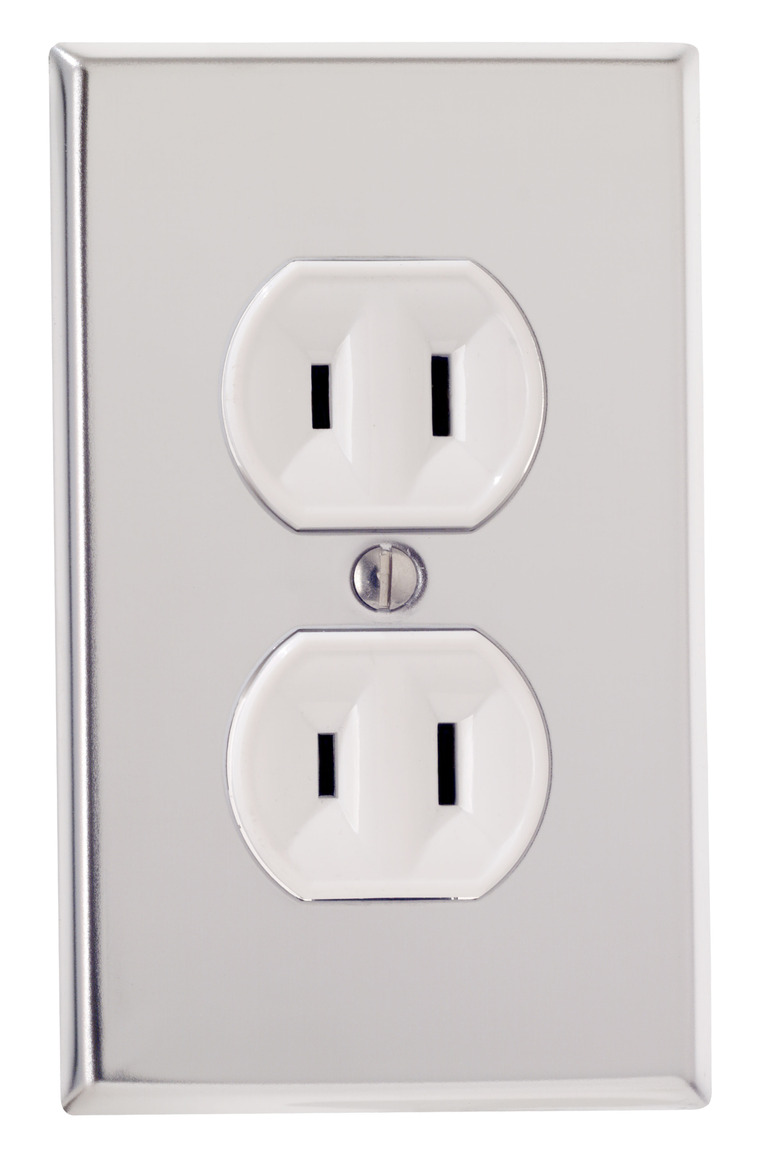How To Ground An Ungrounded Outlet
Things Needed
-
Flat screwdriver
-
Phillips screwdriver
-
Wire strippers
-
Two-conductor wire
-
Drywall saw
-
Drill
-
Drill bits
-
Three-prong outlet
The electrical system in modern homes uses a three-prong grounded outlet to provide power to 120-volt appliances. The purpose of the ground is to provide protection to the user in the event the appliance short-circuits or malfunctions. Harmful voltage follows the wiring to the ground instead of flowing through to the user. In older homes, outlets may use a two-prong ungrounded configuration that provides no protection to the user. Properly grounding these outlets requires running modern wires that are connected to the grounding bar inside the service panel.
Step 1
Turn off the power supply to the house by flipping the main breakers or having the power company disconnect the meter. Remove the retaining screws from the cover of the breaker panel. Remove the cover and set it aside.
Step 2
Remove the retaining screw from the outlet cover. Remove the cover and set it aside. Remove the outlet from the wiring box. Loosen the terminal screws on the sides of the outlet and disconnect the wires connected to the terminals.
Step 3
Remove the wire from the outlet back to the breaker panel. Use a drywall saw to cut access holes as necessary. Loosen the terminal screw on the breaker and pull the wire loose. Loosen the terminal screw on the neutral bar and pull the wire loose. Pull the wire out of the breaker panel and discard the wire.
Step 4
Run a length of two-conductor wire from the breaker panel to the outlet. Use the same holes that the old wire came out of, if possible. Drill new holes for the wire, if necessary.
Step 5
Insert the end of the two-conductor wire into the outlet box. Cut the wire to length, leaving 3 inches of wire extending from the face of the box. Strip the outer jacket off the wire, back to the point where it enters the box. Strip 1/2 an inch of insulation off the ends of the conductors.
Step 6
Slide the bare end of the black conductor under the brass-colored terminal on the three-prong outlet. Tighten the terminal screw until snug. Slide the bare end of the white conductor under the silver terminal. Tighten the terminal screw until snug. Wrap the bare copper conductor around the green screw on the outlet. Tighten the green screw until the copper wire is secure.
Step 7
Place the outlet in the box, tucking the wires behind it carefully. Tighten the mounting screws until the outlet is secure. Place the cover plate on the outlet and tighten the retaining screw.
Step 8
Feed the end of the two-conductor wire into the breaker panel using the same hole the old wire came out of. Cut the wire to length, leaving enough wire to reach the breaker the old wire was connected to. Strip the outer jacket off the wire, back to where the wire enters the panel. Strip 1/2 inch of insulation off the conductors.
Step 9
Slide the bare end of the white wire into a terminal on the neutral bar. Tighten the terminal until snug. Slide the end of the bare copper wire into a terminal on the grounding bar. Tighten the terminal screw securely. Slide the bare end of the black wire under the terminal on the breaker. Tighten the terminal screw.
Step 10
Place the cover on the breaker panel, insert the retaining screws and tighten securely. Turn on the main breakers or have the meter installed to restore power.
Tip
If you're not comfortable cutting holes in walls and working around electricity, hire an electrician to perform this repair.
Warning
Never attempt to ground the outlet to water lines, gas lines or any other metal part of your home. In the event of a fault, the voltage could energize these lines instead of going to ground. GFCI outlets are not a suitable substitute for a properly grounded electrical system.
